My brother [[Johnny]] pointed out that today would have been the 100th birthday of my grandmother Nettie – born Наталка Потягайло, or Nataltka Potjahailo, on March 19, 1915.
Nettie died 16 years ago, but she lives on in our memories. Here she playing the mandolin in a duet with my father on Christmas Day, 1995:
And here she is as a member of the mandolin orchestra in Fort William, Ontario as a teenager (she and her cousin Stella are in the far left in the front row):
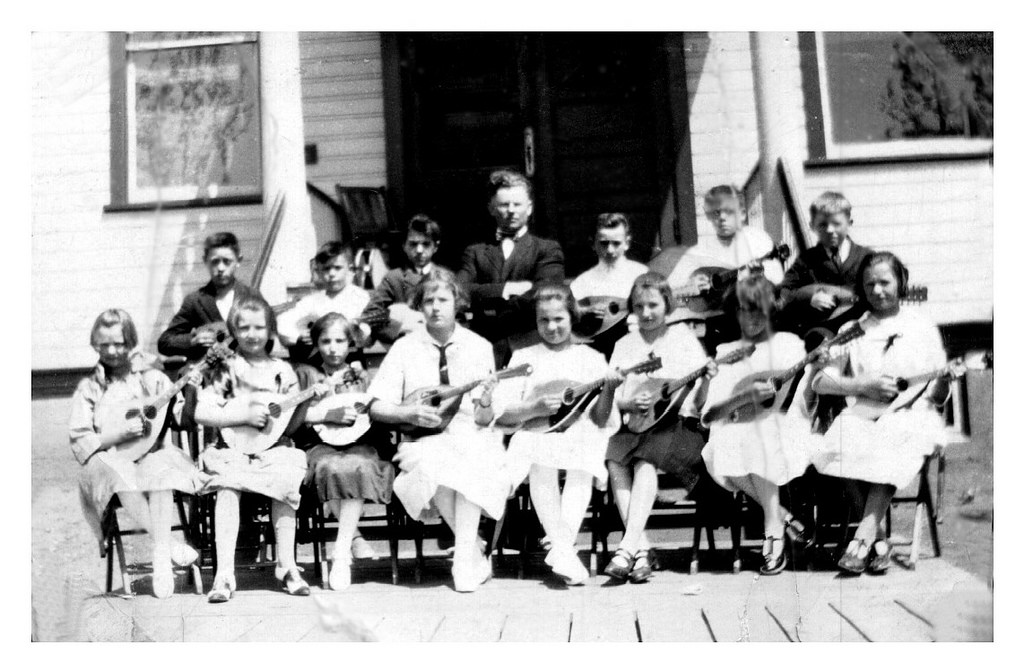
Here’s my favourite story about Nettie. She was visiting us here on the Island in the early 1990s:
About the second or third day, I came down for breakfast and noticed that she was putting cream and sugar in her coffee. This was unusual, as I’d always remembered her taking her coffee black. When I asked her why she’d changed she told me that she’d been drinking coffee black for 60 years and had never tried it with cream and sugar. Earlier that year she had and, much to her surprise, she said, “it just tastes a lot better.”
Remember ALLEX and ELSIR and the Fish Points, two rabbit holes I fell into earlier in the week?
Well part of my struggle for coming to understand this world of aeronautical waypoints has been my weak knowledge of aeronautical terminology and regulation in general.
In this regard I was aided greatly by the notes from the The 8th Meeting of the Asia/Pacific Aeronautical Information Services – Aeronautical Information Management Implementation Task Force (a branch of the International Civil Aviation Organization, or ICAO) which makes reference to the following terms:
- International Codes and Routes Designator, or ICARD, an effort to “develop and maintain a common database of facilities and services required for international air navigation within the EUR/NAT region.”
- 5LNC, or “Five Letter Name Codes,” codes “used for the identification of significant points for ATS routes and designators for ATS routes.”
So ALLEX and ELSIR, it turns out, are 5LNC – five-letter name codes. These codes, says the document, play the following role:
Where a significant point is required at a position not marked by the site of a radio navigation aid, and is used for ATC purposes, it shall be designated by a unique five-letter pronounceable “name code” This name code designator then serves as the name as well as the coded designator of the significant point.
These codes need to be unique and they need to be pronounceable – the “name code designator shall be selected so as to avoid any difficulties in pronunciation by pilots or ATS personnel when speaking in the language used in ATS communications.” This makes sense, as so much of the role of these codes is to be spoken over scratchy-sounding radios. That’s why ETHAN is unlikely to become a 5LNC.
But where do the five letter name codes come from? I found the answer to that buried in a screen shot inside an ICAO manual about the ICARD maintanance system:

“The 5LNC codes,” says the manual, “are drawn from a set of pre-defined five letter combinations generated by ICAO and the FAA in the 1960s. This list was then split and distributed to the various ICAO Regional offices throughout the world.”
The ICAO has a very helpful public GIS system that allows exploration of the ICARD and 5LNC systems; and it turns out there are a pleasant number of 5LNCs right here in the Charlottetown area, including NOVIP, VOLUG and HOWLE:
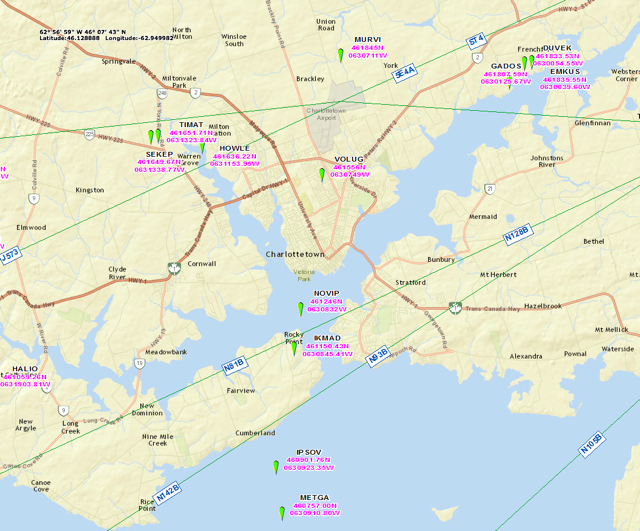
ICAO also has a public downloads pages for the ICARD system that lets you dump all the 5LNC codes allocated to a given country. Which is how I know that Canada has GOATS, TUSKY and ZASER in our hands.
I took the overflights of PEI data that I visualized earlier for an 18 hour period and extended the visualization to include the last 5 days of overflights. Here’s what it looks like:
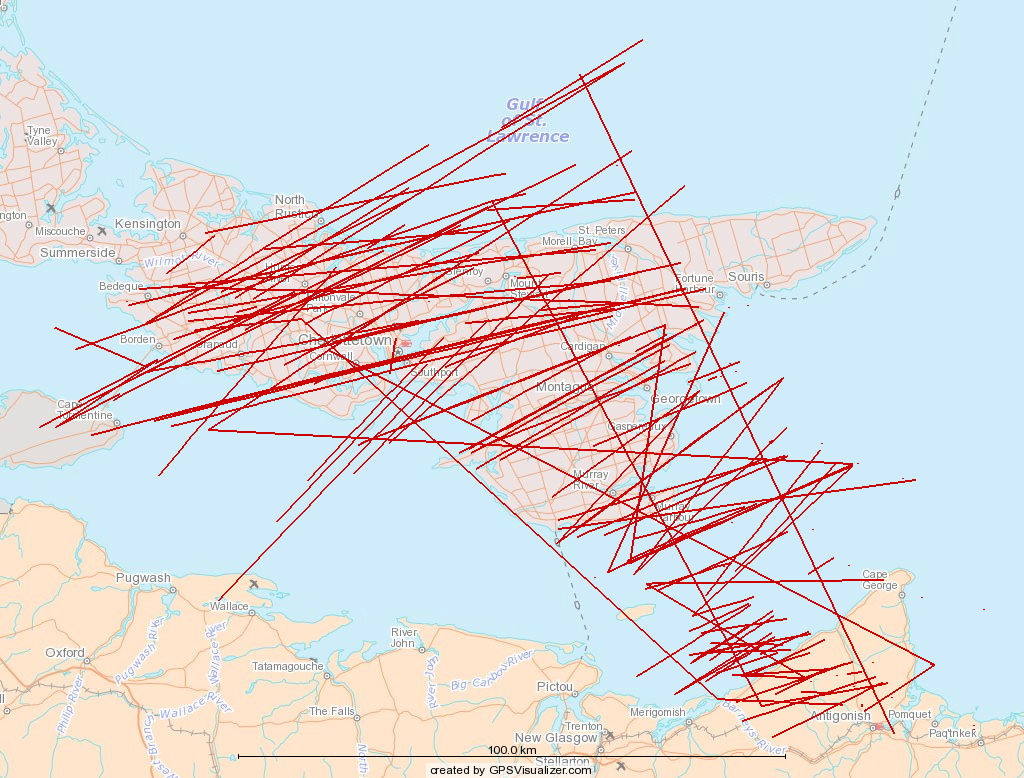
Here’s the same data, but converted into a KML file and loaded into Google Earth, with altitude as well as latitude and longitude used to draw the tracks:

In this image, the intensity of the shadow clamped to the ground tells you something about how frequently a given path has been followed.
My friend Ray took this photo of 100 Prince Street this morning. As you can see, it snowed again. For almost 24 hours.
The key thing to notice in the photo, though, is that the first 2 or 3 feet of the front roof are all but completely cleaned of snow, the result of roof raking every couple of hours on Sunday. Fortunately, the wind took care of the back roof rather effectively, so I needed to spend far less time there than the last time around.
The photo is deceptive: our house isn’t actually blocked in by snow, as there’s a partially-cleared sidewalk between the two snowbanks.
But there’s still a lot of snow.
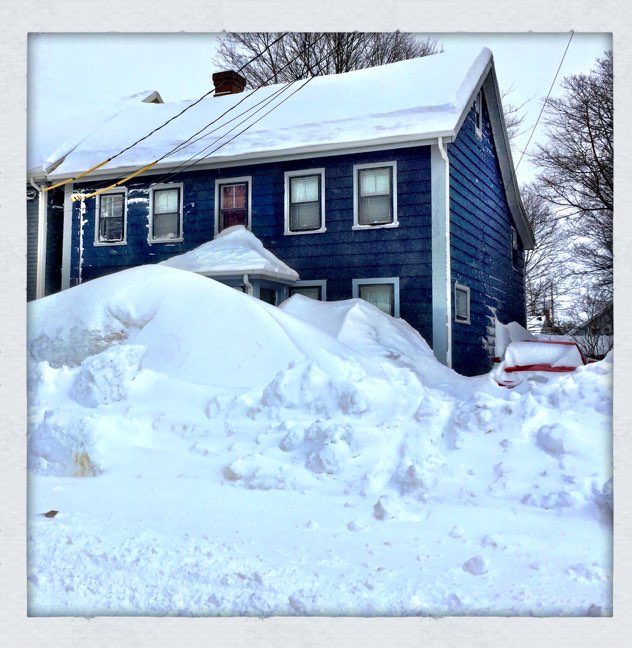
Hidden away in an obscure circular that appears to have been released in early 2014 by Gander Control is notice that a group of waypoints know as the “fish points” are to be deleted:
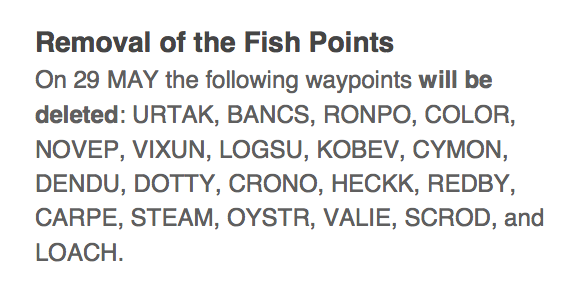
I’ve been puzzling over how aeronautical navigation waypoints get their names; it would appear, if this retirement of the “fish points” is a guide, that that are simply made up, using some sort of arbitrary theme, while ensuring that they don’t sound like other waypoint names, something reinforced in this Nav Canada circular on the same topic that reads, in part “New names to de-conflict with other similar sounding fixes on the NAT” (NAT being “North Atlantic Tracks”).
The challenge now is to connect the waypoint codes with their associated fish species. Some, like SCROD, and OYSTR and CARPE are obvious. Others, I have no idea.
Thoughts?
So I’ve become slightly obsessed with with the world of flight planning and trans-oceanic air travel: it’s a new puzzle to solve, and it involves things flying over my house on the way to far-off lands. What’s not to love?
Last night around midnight, Aer Lingus Flight № 138 (code named EIN138), flying from Boston to Dublin, Ireland, flew over eastern PEI, making landfall near Point Prim, crossing south-eastern Kings County, continuing over Georgetown and Souris and heading off to sea. Here’s its track, from FlightAware.com:
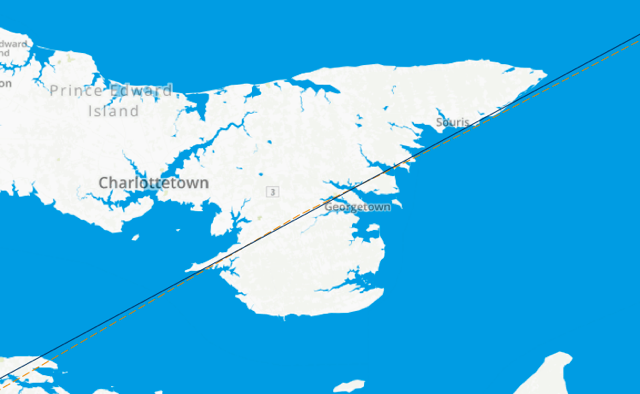
Looking up flight EIN138 in FlightAware provides a lot of interesting information about the flight, including a section labeled “Route” in a box on the right:
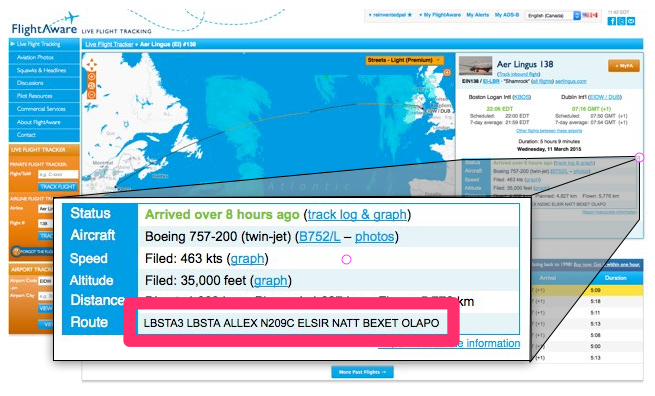
The route information is a series of “waypoints” – aeronautical bread crumbs, if you will – that EIN138 was to follow as it made its way from Boston to Dublin:
LBSTA3 LBSTA ALLEX N209C ELSIR NATT BEXET OLAPO
There is, oddly, no comprehensive database of these waypoints: there was a public resource called DAFIF, but it went dark in 2006, apparently amidst copyright concerns from Australia.
But there remain some web-based, if not open, data sources, that offer an incomplete way of looking up these waypoint codes, the most slick of which is Skyvector.com. You can simply paste the waypoints from FlightAware into Skyvector and it will, to the best of its ability, “connect the dots” (of the waypoints it knows about) and show you the flight plan on a map:
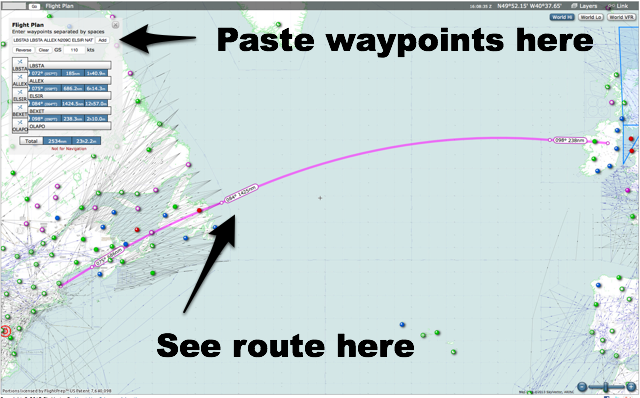
What’s most interesting, for my Prince Edward Island-focused purposes here, are two of those waypoints, ALLEX and ELSIR.
Zooming in a Skyvector.com, I can see the ALLEX is a waypoint at N44°25.00’, W67°.00.00’:
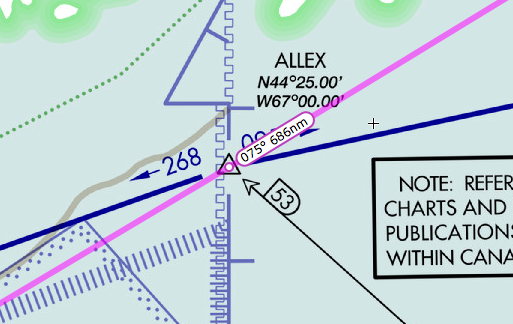
In decimal, that’s 44.416667, -67, which is a spot just inside Canadian airspace off Grand Manan, New Brunswick.
ELSIR, on the other hand, is at N49°30.09’, W52°0.17, or 49.5025, -52.004722 decimal, which is a spot in the North Atlantic off the east coast of Newfoundland:
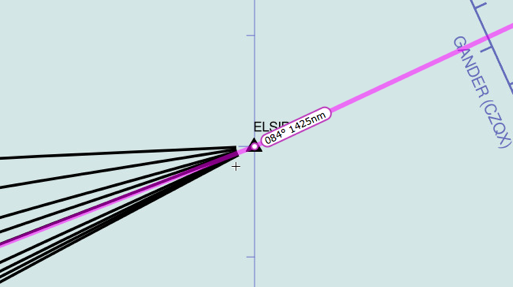
ELSIR is an interesting waypoint because it’s one of the official “aeronautical doorways” to flying across the North Atlantic: all airplanes flying across the ocean fly along prescribed North Atlantic Tracks, which change daily: last night, our Aer Lingus flight started its trans-oceanic voyage by passing over ELSIR.
Running between ALLEX and ELSIR is a line that happens to be labeled N209C (which also appears in the flight plan in FlightAware):
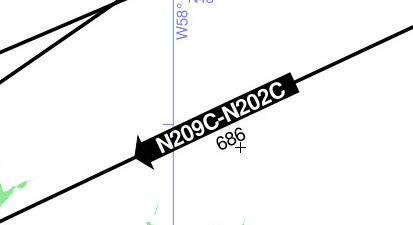
And N209C, because it connects ALLEX and ELSIR, runs directly over eastern Prince Edward Island:
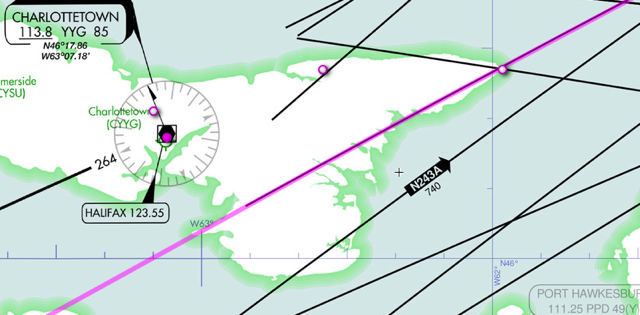
All of which means, I’m assuming, that if you see ALLEX N209C ELSIR in a flight plan, it means that the plane in question will be flying over eastern Prince Edward Island.
Meanwhile, Aer Lingus Flight № 138 landed safely in Dublin at 7:16 a.m. this morning.
I’ve been detecting and archiving ADS-B position reports from airplanes flying over Prince Edward Island for the last 18 hours; here’s a map of what my little Raspberry Pi has picked up:
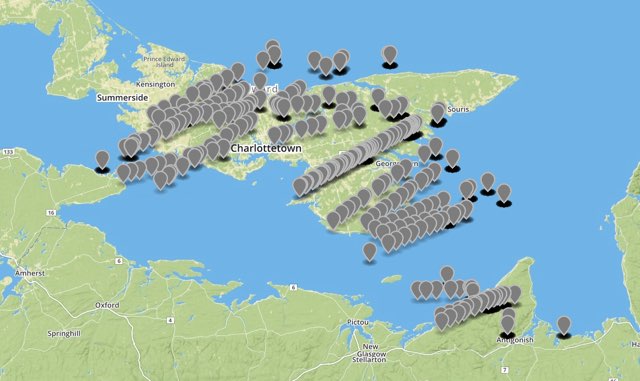
That’s a simple visualization of the positions recorded created using GeoJSON.io. To allow me to see individual planes’ tracks, I dumped the data points into a CSV file, edited it, and then ran it through GPS Visualizer:
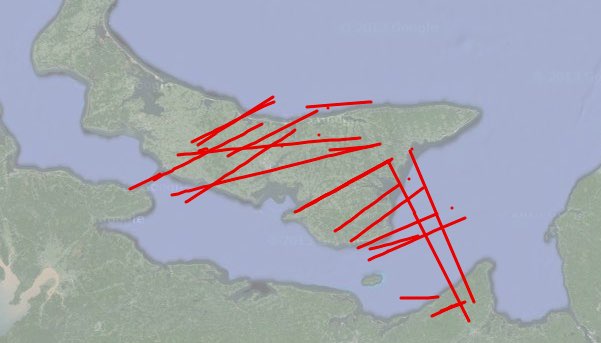
There were 1,095 position reports received from 37 distinct flights (here’s the raw data should you wish to experiment with it yourself):
- AAL42
- AAL50
- AAL78
- AAL80
- AAL86
- ACA848
- ACA878
- AWE722
- AWE750
- AZA610
- AZA65F
- BAW196
- BAW81V
- CJT621
- DAL24
- DAL72
- DLH425
- DLH431
- DLH435
- EIN104
- EIN138
- ETD150
- FDX36
- ICE630
- KLM18
- N800J
- NAX7012
- QTR764
- QTR8102
- SAS926
- SWR52
- THY18A
- UAL114
- UAL126
- UAL58
- VIR12E
- WJA424
You can enter those flight numbers into Google, or into FlightAware, and see the flight details: when you do this you’ll notice that the vast majority of the flights were flying above 30,000 feet and were heading to or from Europe: none of the local flights from Charlottetown Airport were detected, likely because the ADS-B receiver I’m using is on the windowsill over my office downtown, and doesn’t have line-of-sight to local flight paths.
My next step, thus, is to put an antenna up on the roof.
When I talk to people about wind energy generation on Prince Edward Island, they are often under the impression that the wind is a relatively small part of the energy mix on the Island.
And there’s no doubt that because of its variability sometimes there is no wind energy generation on the Island. Like when the wind isn’t blowing. And that’s one of the significant challenges of wind’s contribution to the Island’s energy future.
That all said, sometimes there are days, like yesterday, when the contribute of wind energy is near or above 100% of the provincial load for most of the day.
On this chart, showing 24 hours of load and generation starting at 3:00 a.m. on March 11 and ending on 3:00 a.m. on March 12, the orange line represents wind energy generation in megawatts and the blue line the province’s load in megawatts (the load being “how much electricity we’re all using together”). The wind topped the load several times during the day, including the four and a half hours from 9:30 p.m. to 2:00 a.m.
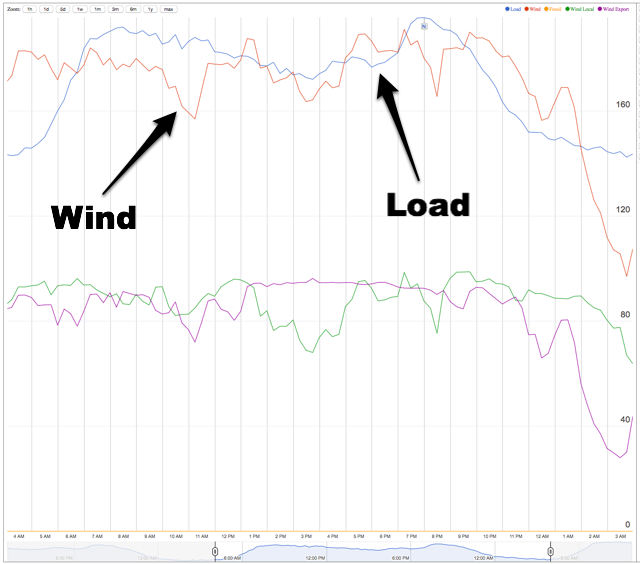
If you’re interested in how it is that, without radar available to air traffic control, airplanes can fly over the Atlantic Ocean without flying into each other, this video from NATS about the Shanwick OCA is a fascinating one.
The video features a walkthrough of an Aer Lingus flight from Dublin to Boston, EIN137. In a delightful coincidence, last night around midnight the return Boston-Dublin flight, EIN138, flew over Prince Edward Island at 37,000 feet:

I’ve again taken the official Prince Edward Island School Calendar and updated a set of public calendar files to make it easier for parents and others to shunt the information around their digital devices. Here you go:
(Note for those of you who already had the 2013-2014 and/or 2014-2015 School Calendasr integrated into your digital devices: you don’t need to do anything, as those addresses haven’t changed from last year).
As a member of the School Calendar Committee for the PEI Home and School Federation I again asked to have the official calendar released as structured data by the Department of Education and Early Childhood Development itself, but as yet this (still) hasn’t happened.
 I am
I am